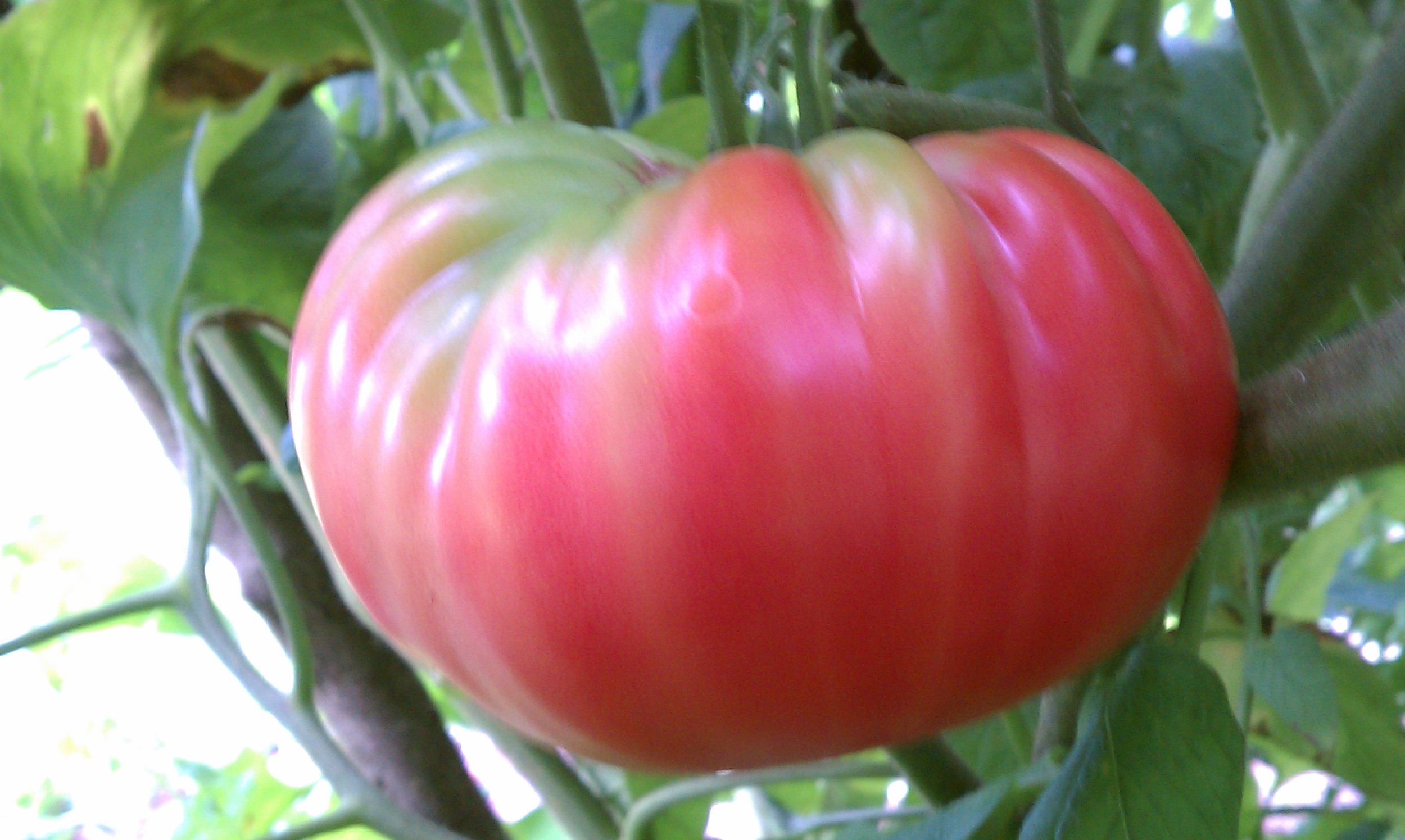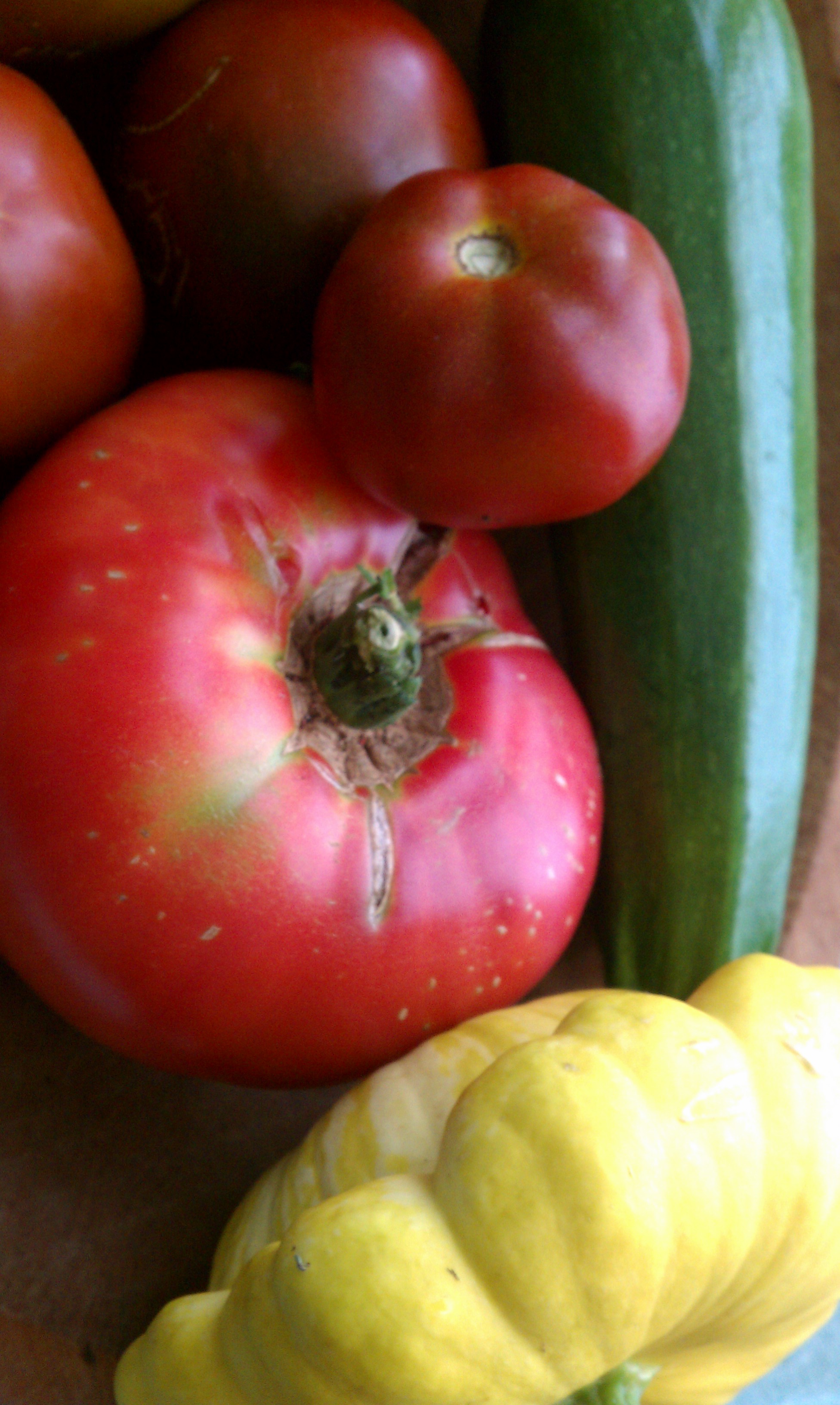“It's difficult to think anything but pleasant thoughts while eating a homegrown tomato.”
-- Lewis Grizzard
It's no surprise to those of you who choose to read What Jasper Said that there is art in everything -- music in the crackle of a fire and dance in the sway of the trees, for example. No matter how you feel about all things great and small, it's impossible to ignore the fact that nature provides us with some of the most beautiful and awe-inspiring sights we ever have the joy to see.
Take, for example, the lowly tomato.
If there's a caliper by which any Southern garden can be gauged, a singular standard of judgment -- not necessarily of quantity but of quality -- it is the wholly unlikely but potentially perfect tomato. The master measure of any gardener worth her salt is the firmness, roundness, color, texture, and taste of the lycopersicon esculentum -- literally, "edible wolf peach."
From the meaty fruits that grow in twisted bushes out by the barn (pronounced "may-ters") to the glorious globes meticulously mulched and precisely staked by women's garden clubs (pronounced "toe-mah-toes"), Southerners will stretch budgets, backs, patience, and sometimes even the truth to brag about their exceptional poma amoris -- love apples of the vine.
As versatile as the very soil in which we sow them is the tomato itself, which we boil, broil, stew, stuff, pickle, puree, glaze, grill, sun-dry, simmer, saute, fry green with cornmeal and pepper, slather with mayo on snow-white bread, or juice and stir with vodka and Tobasco. A dieter's delight, tomatoes are low in sodium, free of fat and cholesterol, and a superb source of potassium, beta carotene, and vitamins A and C to boot. One medium tomato is 35 calories -- and that's if you eat the whole thing. Which many of us do. Happily.
Eighty-five percent of the 30 million back-yard gardeners in America grow one or more of the literally hundreds of tomato varieties with which geneticists and seed-savers have provided us. With the likes of Big Girls, Better Boys, Bonnies, and more exotic mutations such as Royal Chico, Macbeth's Bloody Hand, and Sub-Arctic Plenty (touted as being the world's earliest tomato, coming into fruition in just six weeks), tomato production has doubled worldwide over the last two decades with the average person eating 80 pounds of them every year. Nowadays, South Carolina is among the top five states in tomato market production, and we, by the way, produce the kind that you can actually eat -- not those green, mealy, gassed tennis balls the other coast is known for.
But tomatoes didn't become fashionable in our region until after the Civil War. It's thought that the original aggie-sized fruits grew wild in South America, probably Peru, and were eaten by the ancient Incas. Along with other treasures, early explorers took tomatoes back to Europe where both Italians and Spaniards readily adopted them into their diets and, eventually, brought them to the New World. Even then, colonial Americans eschewed tomato consumption based on the bad reputation of the tomato's kin -- the dreaded nightshade family, which makes them kissing cousins with the potentially poisonous mandrake and belladonna.
Thomas Jefferson was one of the first farmers to take a chance and plant tomatoes in his garden in Monticello in 1781. And to publicly prove the tomato's virtue, another champion, whose name we've lost to history, stood on the courthouse steps in Salem, New Jersey in 1820, where he publicly devoured one of the delicacies -- and lived to tell the tale. That and like testimonies, combined with enlightened plant breeders who produced plumper, tastier tomatoes, made the prospects of stewing up a pot of summer soup (tomatoes with okra and corn), much more palatable to the Southern chef.
To set the record straight -- yes, the tomato is a fruit and not a vegetable. That said, even though a USDA official during the Reagan administration, in response to the mandate to cut the school lunch program budget, proclaimed that not only was the tomato a vegetable but that ketchup satisfied a veggie requirement on our kids' lunch trays. After a pelting of rotten tomatoes, he left his post. In reality, tomatoes are fruits of the berry family.
This weekend, we honor the tomato at Columbia's own Palmetto Tasty Tomato Festival with music, socializing, and most importantly, mater munching. Next year, Jasper told me he'd like to sponsor an art exhibit to coincide with the fest. But this raises the question -- is it even possible to capture the elusive beauty of the blessed fruit on canvas? I don't know, but I'd like to find out.
For more on the Palmetto Tasty Tomato Festival please visit the website and consider buying your tickets early. In the meantime, my friend Tracie Broom has shared some of her photos depicting the beauty of tomatoes with Jasper. Take a look below, lick your lips a bit, and come and see us on Sunday at the Palmetto Tasty Tomato Festival at City Roots urban farm in Columbia.




